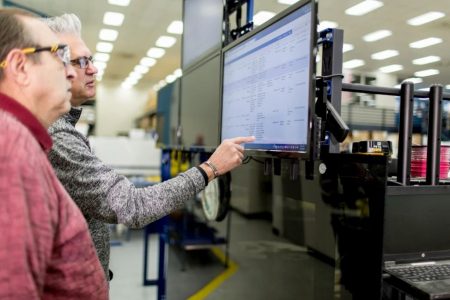 In a previous post, we introduced the four components of our approach to openness in industrial IoT (IIoT). Although openness has long been a central concept for us, inspiring hundreds of products and services that can connect platforms and the seamless transfer of data between them, the specific ways we execute on this strategy have recently generated a lot of interest.
In a previous post, we introduced the four components of our approach to openness in industrial IoT (IIoT). Although openness has long been a central concept for us, inspiring hundreds of products and services that can connect platforms and the seamless transfer of data between them, the specific ways we execute on this strategy have recently generated a lot of interest.
This makes sense. The increased need for smart manufacturing has spurred a digital transformation in the industry. To remain competitive, manufacturers must move beyond the proprietary systems that have defined their industry for decades and instead link together disparate technologies, correlate different data sets, and unify entire systems, factories, and enterprises
In other words, they need to become more open.
Open standards
Open standards are fundamental to how we break down barriers to innovation, flexibility, and efficiency. By standardizing interfaces and information, we can promote interoperability in factories throughout supply chains and across entire enterprises. This creates complete visibility and friction-less communication, allowing manufacturers to more intelligently maximize business value.
A key focus area of our openness strategy is our support for the Open Platform Communications Unified Architecture (OPC UA) across Microsoft’s IIoT services. As a result of our decades-long partnership with the OPC Foundation, OPC UA is an open standard that manufacturers can adopt to make their devices, systems, and data fully interoperable. We have made significant contributions to extend OPC UA across the IIoT space and cloud.
In addition to making all Azure IIoT solutions compatible with OPC UA, we regularly help businesses deploy applications that are aligned with OPC UA standards, ensuring they will work across platforms. We also have leveraged our vast partner ecosystem to develop solutions that help manufacturers adapt legacy hardware to OPC UA’s open concepts. For instance, by using custom adapters that standardize data at the intelligent edge, manufacturers can map their existing machines to open data models, unlocking new data and opportunities.
OPC UA is a powerful tool that has helped us promote open standards across the manufacturing space, however, our commitment to openness means not limiting customers in any way. That’s why, as we extend OPC UA support to even more cloud technologies such as analytics and AI-based anomaly detection, we will continue to let customers choose the standards that work best for them.